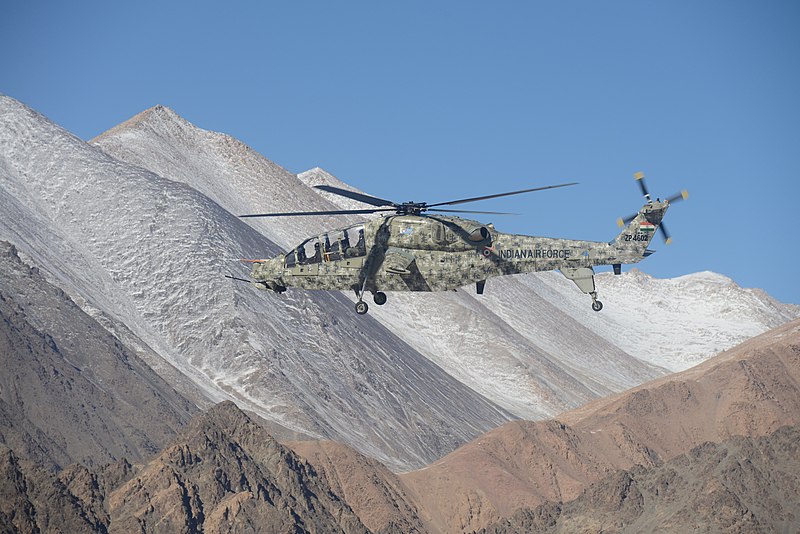Aerospace
LCH Prachand Helicopter Achieves Milestone with Successful 70 mm Rocket Testing

In a significant milestone for India’s indigenous defense capabilities, the LCH Prachand helicopter has achieved a remarkable breakthrough with the successful testing of 20 to 70 mm rockets. This achievement underscores the helicopter’s indigenous combat capabilities and its role in meeting the specific requirements of the Indian Armed Forces.
The LCH Prachand, developed by Hindustan Aeronautics Limited (HAL), was designed to address the unique demands of India’s defense landscape. It serves as a dedicated light combat helicopter, tailored for close air support, anti-tank warfare, reconnaissance, and various combat missions. However, what sets the Prachand apart is its specialization in high-altitude terrain, making it a vital asset for India’s defense strategy.
One of the helicopter’s standout features is its Shakti Engine, a collaborative effort between HAL and France’s Safran. The LCH Prachand received operational clearance in 2017, and since then, it has continued to evolve its capabilities.
This versatile combat helicopter can perform a range of operations, including Combat Search and Rescue (CSAR), Destruction of Enemy Air Defense (DEAD), engagements against slow-moving aircraft and Remotely Piloted Aircraft (RPAs), high-altitude bunker busting missions, counter-insurgency operations in both jungle and urban environments, and support for ground forces.
With a 5.8-tonne class, the Prachand boasts a maximum speed of 288 kmph and a combat radius of 500 km, capable of reaching a service ceiling of 21,000 feet. To further enhance its combat prowess, the helicopter is set to be equipped with Helina missiles, while the air force variant will feature the Dhruvastra.
The Indian defense arsenal now boasts a tandem of combat helicopters, with the Apache and Prachand serving as formidable assets. The Apache comes pre-equipped with a suite of attack missiles and rockets, while the Prachand is steadily advancing its capabilities.
HAL is also exploring international markets for the LCH Prachand, with Argentine officials visiting HAL facilities in October 2022 to examine the helicopter. The interest was rekindled during Aero India 2023, reinforcing Prachand’s potential as a valuable export and collaborative defense solution.
The successful rocket testing marks a significant step in the journey of the LCH Prachand helicopter, solidifying its place as a vital asset for the Indian Armed Forces and a promising addition to the global defense market. As it continues to evolve and enhance its capabilities, the Prachand helicopter stands ready to take on the challenges of modern warfare and defend India’s interests with ingenuity and precision.

Aerospace
Boeing Transfers Rocket Stage to NASA, Paving Way for Human Moon Mission

Boeing has achieved a significant milestone by providing NASA with the second core stage of the Space Launch System (SLS) rocket.
This crucial component, crafted at NASA’s Michoud Assembly Facility (MAF), is set to propel the Artemis II crew into lunar orbit, marking humanity’s return to deep space after a 50-year hiatus.
The monumental Boeing-built rocket stage, the largest element of the Artemis II mission, will embark on a journey aboard the Pegasus barge, traveling 900 miles to NASA’s Kennedy Space Center.
Comparison of two legendary aircraft B777x vs B747 aircraft:Click here
Upon arrival, it will be meticulously integrated with other essential Artemis II components, including the upper stage, solid rocket boosters, and NASA’s Orion spacecraft within the iconic Vehicle Assembly Building. This intricate integration process is a vital step toward the eagerly anticipated Artemis II launch, slated for 2025.
“Boeing-built products helped land humankind on the moon in 1969, and we’re proud to continue that legacy through the Artemis generation,” remarked Dave Dutcher, vice president and program manager for Boeing’s SLS program. “Together, with NASA and our industry partners and suppliers, we are building the world’s most capable rocket and paving the way to deep space through America’s rocket factory in New Orleans.”
NASA, Lockheed Martin Reveal X-59 Quiet Supersonic Aircraft:Click here
The delivery of Core Stage 2 marks a significant achievement in the evolution of the SLS rocket. Towering over 200 feet and powered by four RS-25 engines, this core stage, coupled with two solid-fueled booster rockets, will generate a staggering 8.8 million pounds of thrust. This immense power is crucial to launching Artemis II and future missions into the vast expanse of space.
The SLS rocket stands unparalleled in its capability to transport both crew and substantial cargo to the moon and beyond in a single launch. Its extraordinary capacity will facilitate the delivery of human-rated spacecraft, habitats, and scientific missions to destinations including the moon and Mars, ushering in a new era of space exploration.
-

 Travel1 week ago
Travel1 week agoAir India to Expand US Operations with Three New Routes After a Decade
-

 Travel2 weeks ago
Travel2 weeks agoWhy We Should Avoid These Stamps in a Passport
-

 Airlines1 month ago
Airlines1 month agoInvestigations Reveal Fake Chinese Titanium in Boeing and Airbus Jets
-

 Tech4 weeks ago
Tech4 weeks agoChina’s CATL Plans 1,800-Mile Electric Plane Launch by 2027
-

 Airport3 days ago
Airport3 days agoTop 10 Largest Airports in the World by Size
-

 Aerospace4 weeks ago
Aerospace4 weeks agoChina’s Fighter Jets Turn Wings into Autonomous Drones
-

 Airlines4 days ago
Airlines4 days agoAir India Rolls Out A350s for Delhi-New York JFK and Newark Routes
-

 Defence3 weeks ago
Defence3 weeks agoBoeing Enhances Chinook with New Engines and Block II Upgrades at $96 Million







